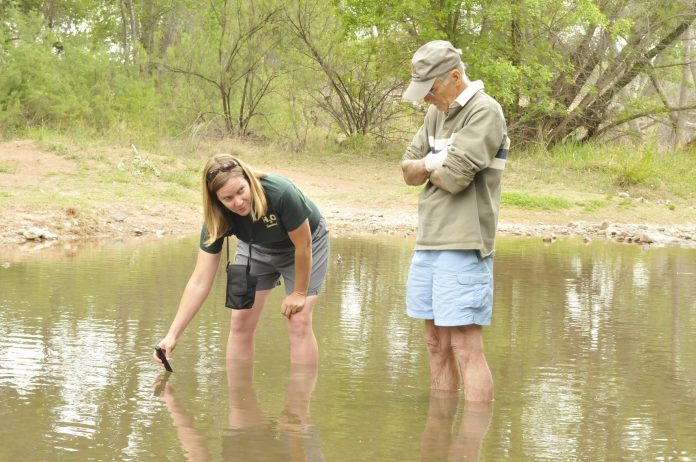Thanks to the Sierra Club Grand Canyon Chapter, those looking to make a positive impact on the health of our waterways had the opportunity Saturday, April 30.
For two to three hours, participants joined the Arizona Water Sentinels in their efforts to help monitor water quality and quantity on the Verde River. Experts discussed issues on the Verde, as well as the Sierra Club’s efforts to help manage high desert riparian systems.
According to Sierra Club Grand Canyon Chapter Water Sentinels Coordinator Jennifer Martin, the group has been monitoring water quality on the Verde since 2007.
“Water Sentinels measure water quality parameters such as pH, dissolved oxygen, conductivity and total dissolved solids concentrations using hand-held devices,” Martin stated. “These data provide information about what contaminants may be present in water and in what concentrations, and whether the river is able to support aquatic plant and animal life and is safe for people to recreate in.”
Concentrations of E. coli bacteria in the water are a major concern, according to Martin. As a result, she works hard to guarantee that data collection techniques meet the most rigorous scientific standards. In addition, her collection plans are approved by the Arizona Department of Environmental Quality. Working with ADEQ allows Martin and her peers to “identify trends and change over time, as well as pick up emergent problems” or potential events.
“As a citizen science program, we are engaging and educating local citizens to gather data but also to raise awareness about the value of the river, threats to the river and sources of pollutants,” Martin added. “The Verde River faces significant threats from excessive groundwater pumping to feed growth and development. The river faces water quality concerns including bacteria, excessive sediment and elevated arsenic concentrations.”
To help the Water Sentinels in their work requires no special skills, knowledge or ability. Equipment and training is provided.
“I expect between 15 and 20 people to attend the training, and over the course of the field season approximately 50 to 70 people will probably participate,” Martin stated before the event.
“Even if an interested person cannot attend the training, they can still participate in the field season. We collect data one Saturday per month, May through Oct. We get started around 9:30 a.m., and are done around lunchtime.”
The Water Sentinels have two teams on the middle Verde. One works in the Cottonwood and Clarkdale area; the other in Camp Verde.
“I have lived in Arizona all my life and worked on natural resources my whole career,” Martin stated. “The Verde River is one of the largest perennial rivers in the Southwest and represents one of Arizona’s most important riparian corridors, providing key habitat for many species, including threatened and endangered species. The Verde River offers a multitude of recreational opportunities and is an important source of drinking water for the Phoenix metropolitan area.
“For me personally, it is a beautiful and serene place to experience nature and get away from the hustle and bustle of daily life and the heat of Phoenix in summer.”



